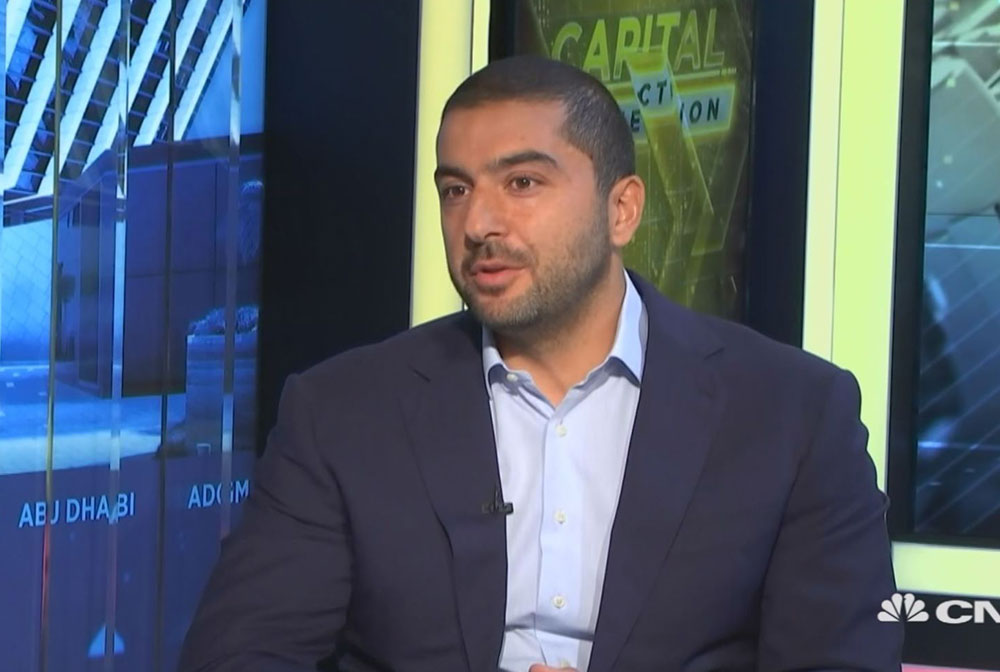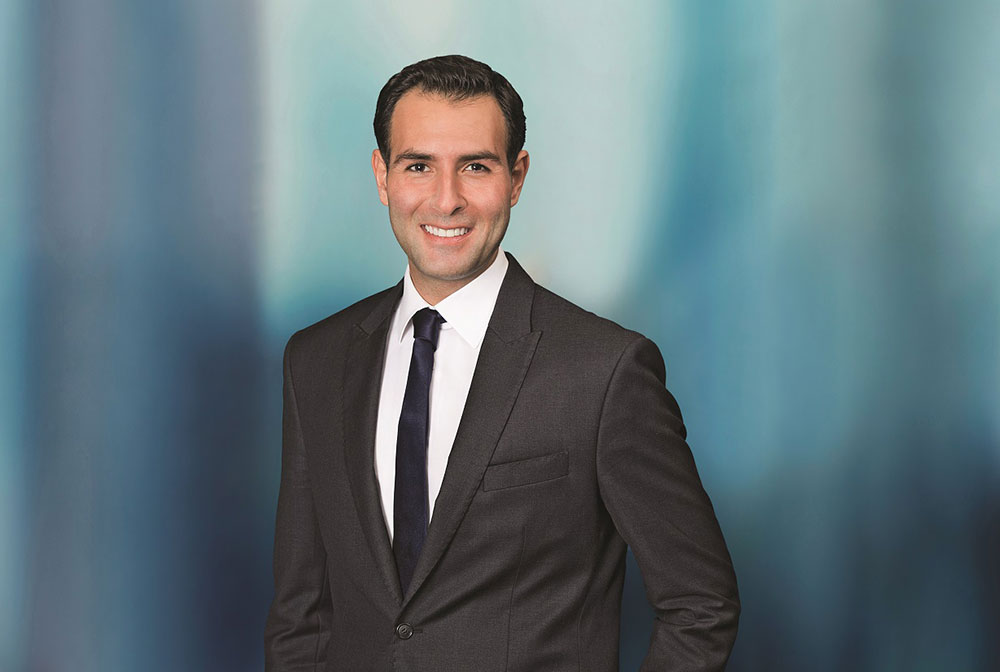By Hamlin Lovell, NordicInvestor
Eyeing the Prize of Vision 2030
Saudi Arabia is perceived as having high geopolitical risk. The death of Jamal Khashoggi has added to the controversy with Finland, Denmark and Germany reportedly suspending new arms export licences to Saudi Arabia in November 2018. However, the country’s stock-markets will be upgraded to emerging market status, and the reform programme could create a transformational growth trajectory for some companies. Nordic Investor interviewed two fund managers who invest in Saudi Arabian equities, who are both based in the region.
“Vision 2030 is an ambitious plan to transform Saudi Arabia’s economy by converting the oil-dependent Kingdom into a modern, efficient and diversified economy” says Bassel Khatoun, Managing Director, Frontier & MENA at Franklin Templeton Emerging Markets Equity, who is based in the UAE. He adds “over three decades of investing in emerging markets, we have seen generally positive reactions when both the public and private sectors rally behind a vision, and transform cities into bustling city states, or countries into developed economies”.
Amwal Capital Partners founding partner and CIO, Fadi Arbid, who is based in Saudi Arabia, agrees: “there has been a paradigm shift in internal and external policy, and the net balance of changes is positive. Women are working and driving cars, people can visit movie theatres, new industries are springing up, and foreigners can own Saudi businesses including retail stores. And there is a crackdown on corruption. This should promote GDP growth through productivity growth, reducing reliance on oil”.
Arbid argues that the transformation is already underway: “despite higher oil prices, the Saudi economy shrank in 2017, due to austerity measures. Non-oil tax revenues have gone from zero six years ago to 37% of the tax take last year, as VAT, expat levies, and land taxes have kicked in”. Arbid expects that a shift from one earner to two earner households could eventually catapult economic growth from an expected 2% this year to as high as 4.5 to 6%.
Khatoun still views the state as pivotal: “we are of the opinion that the government and its related entities will remain central to any acceleration in real non-oil activity going forward. This is primarily because of the ongoing pressure on the private sector with further reforms both in terms of subsidies and the costs of employing expatriate labour”.
Robust macro: twin surpluses and pegged currency
Saudi Arabia is one of only a handful of EM/”frontier” economies that boast both positive fiscal and trade balances. “Within the region, Qatar and the UAE have both positive fiscal and trade balances. Elsewhere, South Korea, Russia and the Czech Republic also have positive balances. (Source: EIU, based on 2018 estimates)” says Khatoun.
Devaluation or currency depreciation has been a very visible risk for many EM and frontier markets in 2018, but not for Saudi Arabia’s Riyal, which is pegged to the USD.
“Policy makers in the region have repeatedly affirmed their commitment to the peg. Given their strong fiscal standing (Saudi Arabia’s debt/GDP is 17% and reserves/GDP is 112% despite recent draw-downs), I believe that we would need to see a sustained period of low oil prices to seriously question the peg” says Khatoun. “The currency peg has served these economies well for over 35 years, during which the policy has held firm through times of even lower oil prices, significantly higher government indebtedness and minimal reserves” he adds.
A de-pegging of the currency is thus seen as very unlikely. If it happened, Arbid expects the unit would appreciate, because Saudi Arabia is a net exporter and a huge dollar earner. Still, he reckons this would overall be a zero-sum game as savings on infrastructure spending would be offset by imported inflation.
Frontier or Emerging Market?
Because of Saudi’s sheer size and the scale of capital market reform it has undertaken over the past few years, the Kingdom has bypassed Frontier Market Indices altogether.
Instead, it will move straight into Emerging Market Indices. Having been approved for inclusion in two key EM indices over the past year, Saudi Arabia will officially become an Emerging Market when it is included in the FTSE Russell EM Index in March 2019, and the MSCI EM Index in June 2019.
And whilst Frontier Markets investors will continue to invest in Saudi, these allocations will remain off-benchmark, as is currently the case.
EM status catalyst
“MSCI’s decision puts it firmly on the radar of international investors and is a positive step for the region’s transition into mainstream emerging market investment. Currently, Qatar, the UAE and Egypt together make up a weighting of less than 1.6% in the MSCI EM Index. Saudi Arabia will be included in 2019 in two phases, in May and August. The initial weighting is set at 2.6%” says Khatoun.
“Overall, Saudi’s inclusion in the MSCI will have a positive impact on the market and is likely to attract approximately US$40 billion in foreign inflows into Saudi Arabia” he adds.
Arbid envisages somewhat higher flows: “EM status is a huge catalyst from a pure flow perspective, which could contribute USD 50 billion of inflows from active and passive investors. That is 55 days of average volume at current liquidity levels, and there are six or seven of index balancing months for passive inflows in 2019” he says.
Even so, “as seen in other MSCI EM markets, after the flows, there may be a correction at some point later so you need to invest with an active/ fundamental perspective” he adds.
Aramco
“Saudi Arabia’s share in MSCI EM is expected to increase if, and when, state-owned oil company Saudi Aramco is floated on the stock exchange” says Khatoun.
“Despite the delay, we still welcome longer-term plans to IPO Saudi Aramco as part of a broader strategy to diversify Saudi’s economy. The IPO would represent an important step towards reducing Saudi’s reliance on oil, for further privatizations, and for setting the standard for corporate governance and transparency locally. We believe that a listing on an international exchange is also an important complement to a local listing. A listing on one of the deep and actively traded markets would provide access to a broader range of investors and help develop a strong corporate governance framework” says Khatoun.
“However, like any investment considered by the Franklin Templeton Emerging Equity team, our participation in the Aramco IPO will be based on our rigorous, proprietary due-diligence and our assessment of the opportunities and risks of such an investment. Many of the factors involved in making that decision remain unknown at this stage, and would likely become clearer as the IPO process evolves”.
Arbid thinks that Aramco is misunderstood in being perceived as upstream when in fact it is really midstream. He is watching Aramco closely as it seeks to vertically integrate along the supply chain by acquiring SABIC, a move that would reduce Aramco’s oil price sensitivity.
Arbid thinks that Aramco is misunderstood in being perceived as being only an upstream player when in fact it has investments across the oil and gas value chain with current activities in midstream and planned investments in downstream assets. He is watching Aramco closely as it seeks to vertically integrate along the supply chain by acquiring SABIC, a move that would reduce Aramco’s oil price sensitivity.
Valuations
“The Saudi market is currently trading at a premium to its GCC and EM counterparts, in aggregate, though it trades at a slight discount to its own historic valuation levels. However, Saudi trades at a discount to about half of the countries included in the MSCI EM index. Saudi Arabia’s dividend yield also remains high, with an average dividend yield of around 4.0%, higher than the EM average of about 3%” says Khatoun.
Arbid finds the Saudi market is not cheap in aggregate, but that valuations in public markets are below those in private equity in the region. Having previously been private equity investors in the Gulf, Amwal apply a private equity mentality in terms of living locally, leveraging their social networks, and visiting lots of companies.
Sectors
Arbid rates certain sectors as cheap. Insurance is an example where regulation could help earnings to grow 20% per year, yet good companies trade as cheaply as 9 times PE ratio. Meanwhile health and motor insurance companies starting from ground zero could enjoy exponential growth. Banks valued at two to three times book value could also be fairly valued given their 20% return on equity, yet benefiting from the index flow game. Healthcare, fitness and entertainment are other growth sectors, as is tourism. The Umrah or so-called “mini-Hajj” can be done at any time of year, and could increase the number of pilgrims to 18 million a year from 7.5 million today- and one article even projected as many as 30 million such pilgrims by 2030. Arbid is wary of consumer staples however, as he feels that valuations around 20 times earnings do not allow for headwinds from slower consumption growth.
Khatoun has somewhat similar sector picks: “our preference is for domestically driven stories with high structural growth rates that will be transformed positively by government policy. Insurance, healthcare and education all fall into this category, as do certain consumer discretionary names. Car-leasing companies and insurance firms, for example, stand to benefit directly from new laws that enable women to drive in the Kingdom. And with increased female employment and higher disposable income, consumer stocks should benefit too in the medium-term”.
He also likes banks as “many of the Kingdom’s lenders will be the largest recipients of foreign flows from Saudi’s MSCI EM inclusion. They also stand to benefit from increased capital markets activity. Banks have significant potential for growth because margin compression has subsided, and there is now upside potential from a rising interest rate environment because of a large share of non-interest-bearing deposits. Banks also remain well provisioned against non-performing loans. Capitalization levels are above regulators’ stringent requirements, leaving potential for increased lending or return of capital through higher dividends”.
Stock universe and Islamic investing
Of 1,500 MENA stocks, Arbid judges 400 to be investible, of which 150 are listed in Saudi Arabia. Amwal owns a concentrated book of 10-15 stocks, and has outpaced the S&P Pan Arab index by 55% since inception in January 2014.
Amwal has only one client who invests in the Islamic universe, which is about 80% of the Saudi universe. This reduces the Saudi stock universe from 160 to 140 stocks. For example, there are both Shariah and non-Shariah compliant banks.
Risk to the core thesis
Geopolitics apart, the runway of growth is not guaranteed, as there is some domestic resistance to modernisation. Thus far, MBS has proceeded with his agenda.
“All in all, we are optimistic about the changes that Vision 2030 may bring, and we think that the Saudi authorities are on the right track. We are however aware of the implementation and execution risks involved in such progress” says Khatoun.
Trading, settlement, custody
Says Arbid: “Saudi Arabia has created a qualified foreign investor rule, which allows direct access by foreign investors; HSBC is the biggest local custodian. Settlement in T+2 was a condition of MSCI EM status, implemented a year ago”.
“Commission trading costs are 6-12 basis points for local Saudi investors. Our Cayman fund is not considered Saudi, so we pay 20-25 basis points, for swaps or P-notes, bought from the main bulge bracket firms and other local brokers. Bid offer spreads can be as low as two basis points” he adds.




